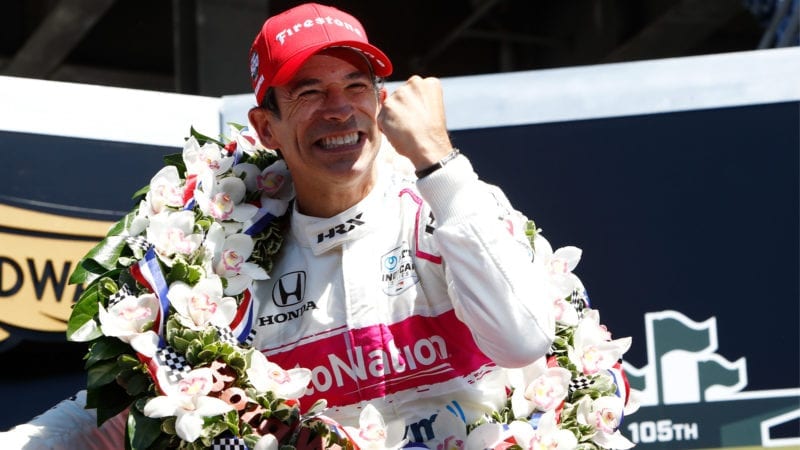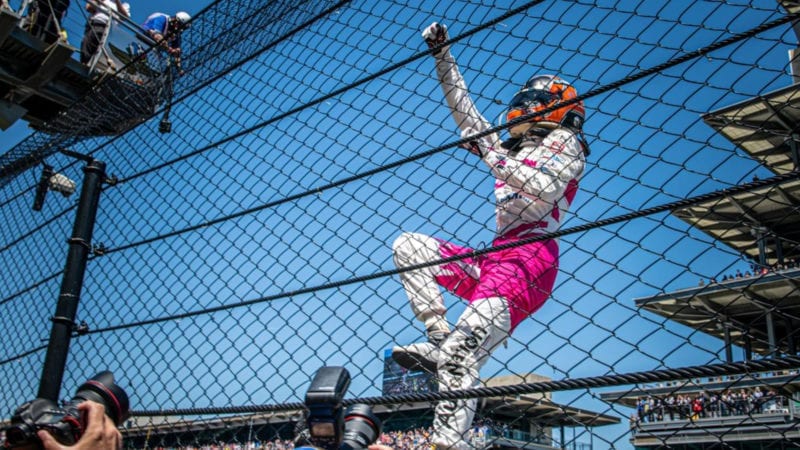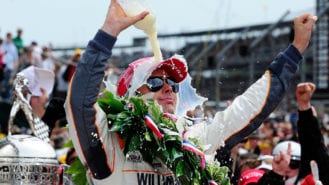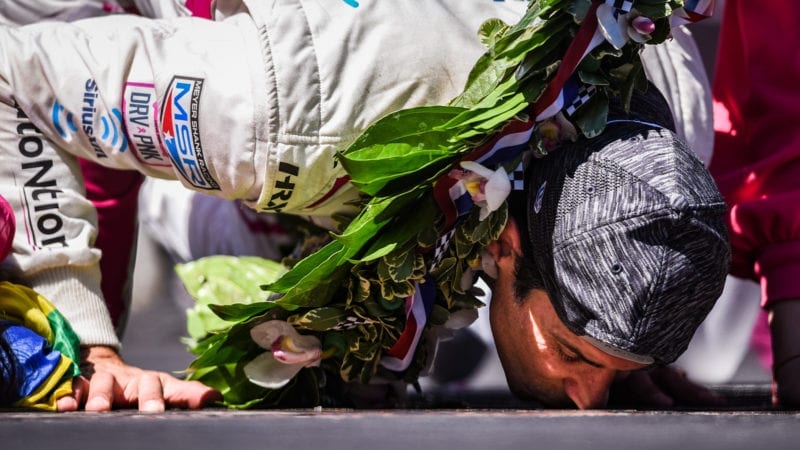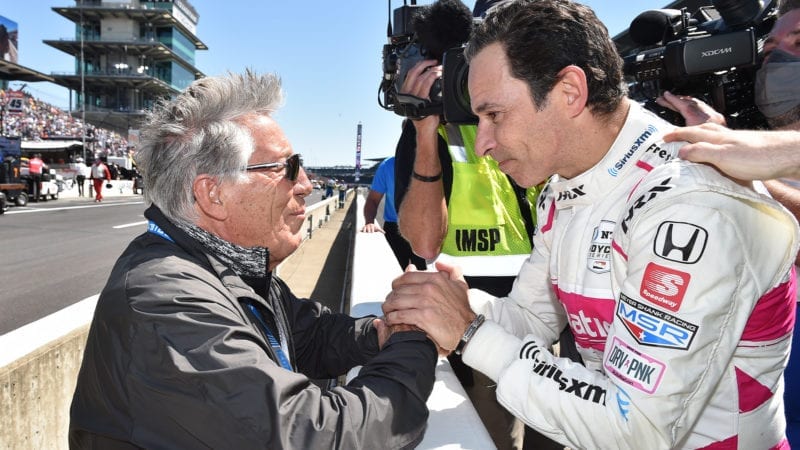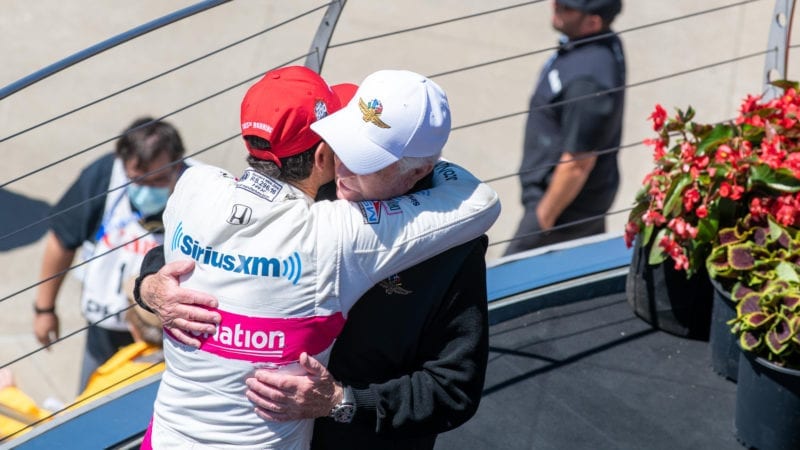To some, this writer included, it was sometimes easy to doubt the sincerity amidst the larger-than-life personality traits and mile-wide smiles during Castroneves’ 20-year career at the top of his sport. But of course he’s sincere – he’s a Brazilian racing driver! And just put aside the cynicism: he’s a natural for American crowds to love, especially since he burst into wider mainstream consciousness by winning Dancing with the Stars, the US version of Strictly Come Dancing. Eat your heart out, Bill Bailey.
As for the race itself, who says it’s hard to pass on ovals these days? The stats on this Memorial weekend read 361 passes for position, 36 of which were for the lead of the race, Castroneves securing his victory with a beautifully timed Turn One move on the outside of the weaving Alex Palou – at 24, nearly half his age – just two laps from home. Their tense battle, in which they passed and re-passed each other following the final pit stops, will go down as one of the finest of the 500’s 105 editions.
It turned out to be a decent day for the veterans. Behind the exceptional Palou, 37-year-old Simon Pagenaud finished a tough month of May for Penske on a strong note, charging past Arrow McLaren SP’s 22-year-old Pato O’Ward to snatch third place. With a few more laps he might well have added a second 500 victory to the one he scored two years ago.
Behind O’Ward, Indy specialist Ed Carpenter, 40, capped a strong showing for his team – like Meyer Shank, once considered a minnow but perhaps no longer – by finishing fifth, ahead of Americans Santino Ferrucci and Sage Karam, who had started 23rd and 31st respectively. Behind them, Carpenter’s front-row starter Rinus VeeKay was a deflated eighth after a race that had promised so much more – but at 20, time is well and truly on the Dutchman’s side.
And completing the top 10? No less than Juan Pablo Montoya, the two-time winner finishing his somewhat underwhelming 500 return with Arrow McLaren SP on form, ahead of another 46-year-old Brazilian fan-favourite, Tony Kanaan. Still life in the old dogs and all that.
But the result didn’t mask what we’d also seen in the previous five IndyCar races, in what is proving to be a terrific season. The generations most definitely are turning thanks to the likes of Palou, O’Ward and Veekay, all of whom led the race, as did 21-year-old Colton Herta before his challenge faded. They all looked perfectly at home at the front too and in their hands, IndyCar has a great deal to look forward to through the rest of this decade.
At the upper reaches of the so-called new-wave, 29-year-old Conor Daly spent the most time of anyone up front, and for the first time in his career too, driving Carpenter’s cool US Air Force entry that looked a little like an F-16 on wheels. Derek Daly’s son spent 40 laps in the lead and while 13th at the finish represented another anti-climax at his home track, the over-riding emotion should surely have been one of sheer relief. His escape from a collision with an errant wheel was a sobering reminder why IndyCars now run with ugly Aeroscreens. Daly’s wrap-around windshield wasn’t actually tested on this occasion, because the Firestone that had spun off unlucky Graham Rahal’s car after a botched pitstop pinged sky-high off the USAF Dallara’s nose – but Daly’s quivering hand movements on the steering wheel signalled what a terrifying moment this must have been. Another mile an hour more, and in an earlier era, he wouldn’t have stood a chance.
Watching those onboard TV pictures, thoughts immediately turned to Romain Grosjean, watching from afar after choosing to give the ovals a miss in his rookie IndyCar season – in the wake of his own miraculous deliverance from that fiery crash at the Bahrain GP last year. Sure enough, the Frenchman responded on Twitter: “Thanks Aeroscreen!!! I was very stupid not to want the Halo or Aeroscreen to be brought fwd,” he wrote. “I’ll never race a car without it anymore.” As Grosjean says, he was an outspoken critic when such devices first appeared and indubitably both solutions are ugly, heavy, ungainly – but all too clearly, there’s no going back now. There just can’t be when they have and will save lives.
